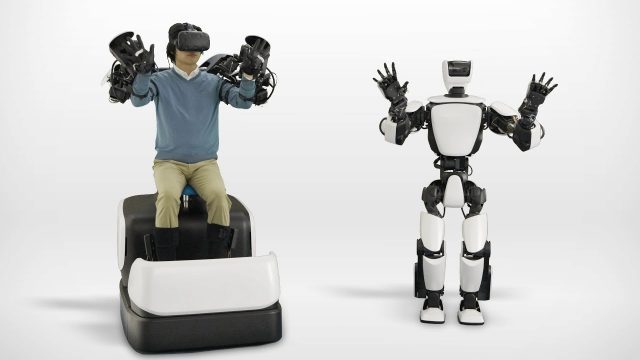Telepresence and Remote Control

The same benefits from 5G which could unlock cloud-rendering of interactive content could also make for more viable immersively operated remote control for things like vehicles, surgical robots, and remote avatars.
Again, latency here is key. Remote control obviously exists today, but there are some use-cases where latency is too high to be viable or safe.
Take remote vehicle control, for instance. In the future, real operators may need to occasionally drive autonomous cars manually in cases where AI systems have failed. Rather than send someone physically to the car, an operator could connect remotely to the vehicle to become a ‘virtual’ driver. Control latency here would need to be very low to make this safe. It’s easy to understand how this extends to other latency sensitive use-cases like robotic surgery or remote avatar control.
Easier Content Snacking and a Bigger Pipe for WebXR

This is the only one that’s about pure bandwidth. As median internet speeds increase, use-cases evolve to make use of it. You probably wouldn’t have watched that last funny YouTube video if you had a 56k connection and had to wait an hour for it to buffer, but sufficient bandwidth makes content consumption more fluid and lowers the bar on what you’re willing to watch because the payoff doesn’t need to be high if the wait is low.
If 5G makes a bigger pipe more readily available, it can reduce the friction of using VR and AR by making it that much faster to get your head into the content. Take the recently released Asgard’s Wrath, a highly anticipated VR game which clocked in at 121GB. For many folks with slower connections, this massive size meant starting the download when they got home from work and not being able to start it until the next day.
More bandwidth on average reduces this friction and makes content more snackable since users don’t need to spend as much time to sample the content being offered to them.
This could especially be a boon to WebXR, which delivers AR or VR directly through the web browser, very similar to how websites are accessed. Because WebXR content isn’t pre-downloaded like a game or video, it needs to be small enough in size that the user doesn’t sit through a painful wait while the experience loads. With greater bandwidth, WebXR experiences can be made larger and with greater detail, and it would be more seamless to jump from one WebXR experience to the next without long waits.
5G is Latency & Bandwidth, But Execution & Economics Are Still Key

And that’s about it… along with any other use-case you can imagine where the key barrier is latency and bandwidth. Those are the pieces you should come back to any time that someone throws any technology and 5G into a sentence and tries to explain how 5G is going to revolutionize that technology, industry, or use-case.
Is anything unlocked by reducing latency and increasing bandwidth? When it comes to AR and VR, the answer is yes in theory, but execution and economics are equally important.
5G will definitely open up the possibility of the use-cases described above, but possibility doesn’t always mean viability. It might be possible to, for instance, deliver a good cloud-rendered VR experience thanks to the benefits of 5G, but how much are users willing to pay for this, and is it greater than the cost to run such a service?
These are big questions which to date only have rough answers. It will take the slow rollout of 5G into the market before the actual bandwidth, latency, and costs are known, and only then will the line be clear between the possibility and viability of various use-cases.






